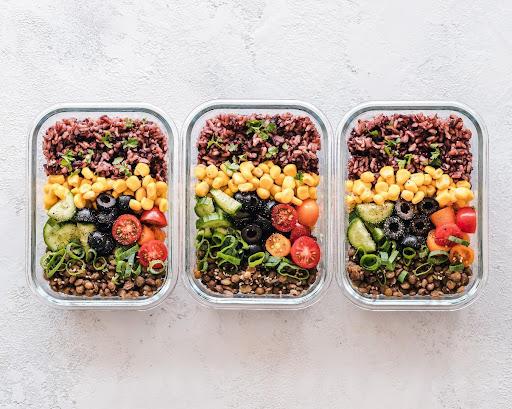- Messages
- 2,136
- Reaction score
- 1,369
- Points
- 113

Tracking macros is becoming popular among bodybuilders and fitness enthusiasts because of its effectiveness. Counting macros limits the number of carbs, protein, and fats you consume to precisely what your body needs. It also helps you get the right mix of nutrients on your fitness journey. So, how do you correctly count macros, and why should you count them?
WHAT ARE MACROS AND WHY COUNT THEM?
Macros, short-form for macronutrients, refers to the three main categories of nutrients- carbohydrates, proteins, and fats. These three are the main nutrients your body needs in large quantities compared to micronutrients- vitamins and minerals.
Almost everything you consume has a percentage of fat, protein, and carbohydrates. For example, beef, classified as a protein, also contains fat. Another example is an avocado, classified as fat but contains proteins and carbohydrates.
Counting macros helps you know the calorie intake and how they affect your body. For someone aiming at cutting weight, counting macros enables you to stick to a specific number of macronutrients to achieve your goal. So, to manage your weight or gain muscle, you should track calories to ensure your body is getting the right amount of nutrients.
HOW TO KNOW THE MACROS YOUR BODY NEEDS
| Macros | Benefits | Calories | Recommended Intake Amount |
|---|---|---|---|
| Carbohydrates | Quick energy Promote digestive health | four calories/gram | 45% to 60% |
| Protein | It helps in growth, muscle development, muscle repair | four calories/gram | 20% to 35% |
| Fats | Insulation during cold weather It enables the body to absorb vitamins E, D, and A | Nine calories/gram | Remainder from protein |
First, you need to identify your weight loss and fitness goals to determine the amount of macronutrients you need. But before that, having a background of what every macronutrient contains is an essential part of this journey.
CARBOHYDRATES
Carbohydrates give you fast energy, and they cannot be completely cut off from your diet because they offer you the energy you need and prevent some health issues.
Once you eat carbohydrates, your body converts them into glucose and uses them immediately or is stored as glycogen.
Some carbohydrates, like whole, contain high dietary fiber, so they also help promote digestive health. Some great foods high in carbs include:
- Legumes- peas, beans, soy, lentils, and peanuts
- Bread, pasta, and cereals
- Starchy vegetables- sweet potatoes, potatoes, corn
- Grains- rice, oats, barley, rye, and wheat
- Pseudo cereals- wild rice, millet. Amaranth, quinoa, and teff
- Fruits- bananas, apples, and bananas
PROTEINS
Proteins are essential for our growth and help in muscle development and recovery. Not only that, but proteins also prevent infections.
Proteins contain amino acids, necessary building blocks for your body’s functioning. We all need 20 amino acids and nine that our bodies cannot produce, so we must obtain them from food. Some great sources of proteins are:
- Seafood- shellfish and fish
- Animal meat- beef, pork, lamb, chicken, and turkey
- Legumes- beans and peanuts
- Dairy products- whey protein, cheese, yogurt, and milk
- Eggs
FATS
Dietary fats help the body remain warm during cold seasons, help absorb fat-soluble vitamins K, A, E, and D and protect our body organs. Fats also aid in hormone production and cell growth. You can meet your fat intake by eating avocado, egg yolk, olives, full-fat dairy like cheese, fatty fish for example, salmon and sardines and oil from nuts, seeds, and fruits.

HOW MANY MACROS DO YOU NEED?
Every day your body needs a different amount of fuel to push through the day. Therefore, you want to ensure you eat foods that give you the energy to perform at your best.
In most cases, it’s best to get the help of a professional to help you determine your macros. However, there are steps that you can take on your own to know the amount of macros you need to take. Below are some steps to figure out your macros percentage:
YOUR CALORIE INTAKE GOAL
Your age determines your calorie goal, body weight, gender, body type, and goals, either weight maintenance or weight loss.
For weight loss, you will have to reduce the percentage of your current calorie intake by at least 10%. If your calorie goal currently is at 2000 calories per day, you might want to cut the number to 1800 calories daily to reduce your body weight.
FIGURE OUT YOUR ACTIVITY LEVELS
For someone active, the table below can help you figure out your macros based on your activity levels. The first table offers a guideline for active people, and the end goal is to lose weight.
| Carbohydrates | Protein | Fats |
|---|---|---|
| 45-65% | 10-35% | 20-30% |
Table 2 offers guidelines on how many macros an individual on a weight loss journey needs to take while working out 30 minutes daily, five days a week.
| Carbohydrates | Protein | Fats |
|---|---|---|
| 45% | 30% | 25% |
For someone who goes beyond a 1-hour workout session or is on a macros diet for athletes, you might need a professional dietician to advise further.
Turn The Percentages into Grams to Determine Your Macros
The whole thing of determining macros might seem complicated if you stick to percentages. So, what you’d want to do now is to transition the percentages to grams. Carbs and protein carry four calories, while fats contain nine calories. So, if you calculated your supposed calorie intake per day and it came to 1800 calories, then you can break it down as
Carbohydrates: 45% 0f 1800= 810
810 by four calories= 202.5 grams of carbohydrates
Protein: 30% of 1800= 540
540 by 4 calories= 135 grams of protein
Fats: 25% of 1800= 450
450 by 9 calories= 50 grams of fat
So, for someone working out 30 minutes a day for five days a week, you will need 202.5 grams of carbohydrates, 135 grams of protein, and 50 grams of fat daily.
The math is pretty simple and can help you achieve your weight goal without omitting your favorite meals as long as you stick to the plan.
ARE YOU MEETING YOUR MACROS?
Now that you know exactly how many grams you need from every macronutrient, how can you ensure you meet your macros? Thanks to technology, you can use applications or websites like Cronometer, MyFitnessPal, Lose It, and My Macros+ to track your macros. Alternatively, you can use a digital scale to weigh your food and get accurate macronutrient calculations.

TIPS ON HOW TO COUNT MACROS
Counting macros can feel like a lot of work. But it isn’t. With the tips below, you can count your macros without any difficulties:
HAVE A PLAN
It’s hard to get anything done without proper planning. Counting macros isn’t any different. You have to prepare by making meal preps and finding a tracker to enter your meals and goals.
GETTING A WEIGHING SCALE/ AN APP
You’ve got everything planned out, and now you have to ensure that every meal you take is weighed appropriately, so you don’t go off limits. Reset the scale every time you weigh food.
KEEP IT SIMPLE
Avoid making meals with tons of ingredients because it will be hard for you to track your macros. Remember, every ingredient in your meals carries a certain amount of macros. Avoid taking starch veggies alongside carbohydrates too.
BENEFITS OF TRACKING YOUR MACROS
Tracking your macros offers a lot of benefits. It;
PROMOTES WEIGHT LOSS
A macros diet can help one reduce weight effectively by keeping track of the amount of calories they take in a day. It’s even easier to maintain the weight after attaining your weight loss goal because you will still need to track your calories.
OFFERS A SUSTAINABLE PLAN
Most people opt for crash or restrictive diets to meet their weight loss or fitness goals faster. Unfortunately, these diets aren’t sustainable and often do more harm than good. Every macronutrient is considered necessary when counting your macros, so there are no forbidden foods. It is, therefore, sustainable and more realistic.
PROMOTES GOOD HEALTH
Tracking macros differ from tracking calories, so your attention is shifted to food quality rather than calorie content. You get to eat a balanced diet of three primary macronutrients, promoting your health. Besides, tracking your macros ensures you consume the right food your body needs.
DOWNSIDES OF COUNTING MACROS
While counting macros helps you to track your diet, there are a few disadvantages of a macros diet.
CAN BE STRESSING
If you’re used to eating everything at any time, you’ll find it hard to count your macros. However, you can easily adjust to counting your macros through simple, effortless tools like apps.
LACK OF NUTRIENTS
When considering a macros diet, you focus on the big four; protein, carbohydrates, and fats. Most people focus on macros and forget about micronutrients like minerals. You might need to add a multivitamin-mineral supplement to get enough minerals and vitamins in your diet.
DEVELOPING OBSESSIVE EATING BEHAVIOR
While you get used to tracking your macros, you will likely fall into obsession and develop restrictive behavior because you don’t want to exceed the set limits. It is essential to consult a healthcare professional before tracking macros so they can screen for any current or potential eating disorders.Note: Tracking macros doesn’t consider quality. Remember, the diet is flexible and does not restrict less healthy sources of macronutrients. For example, you are not restricted from eating simple sugar as a source of carbohydrates. While you have the freedom, it is best to focus on consuming fiber-rich sources of carbohydrates. Therefore, you should make conscious health choices and choose fiber-dense foods for your carbohydrate intake.

